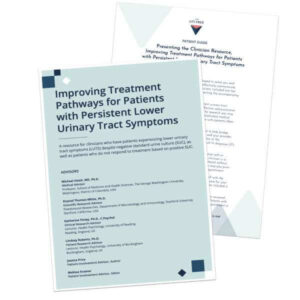4 Surprising Facts About Recurrent UTI
By Melissa Kramer
Founder, Live UTI Free
Despite how common recurrent UTI is, there is still much that is not understood about the bladder, its microbiome and the immune system response.
There are some exciting new developments in this area of research. So before jumping into the 4 facts that everyone should know about recurrent UTI, let’s look at the new developments.
New Developments For Recurrent UTI
Many people with recurrent UTI have tried various treatment and prevention approaches, with little or no success. It can also be very difficult to find a clinician with the right knowledge and experience to help.
Fortunately, there are resources to point you in the right direction, and potential new treatment options:
1. Join A UTI Clinical Trial
A new antibiotic for UTI is currently being studied in a clinical trial across the US. As you know, new treatment options are very much needed, particularly for those who experience recurrent and chronic UTI.
Approximately 5000 participants will be invited to take part in this research.
This is an important study and our hope is that the research will help provide an additional UTI treatment.
Who can join the study?
Female participants aged 12 years or older, who:
- Are not pregnant;
- Have no known anatomical abnormalities within the urinary tract; and
- Have experienced signs and symptoms of a urinary tract infection in the last 96 hours
Those who experience recurrent or chronic urinary tract infection with episodic symptoms (with symptom-free days between UTI episodes) and who are not currently experiencing symptoms may still be eligible for the study during a future episode of UTI symptoms.
All volunteers will be screened for eligibility before entering the study. Participation in the study is at no charge.
How can you get involved?
Live UTI Free is providing recruitment support for this study, and you can learn more about eligibility criteria, or how to join here.
2. Download Free ‘How To Talk To Your Doctor’ Resources
Whether you’re at the beginning of a recurrent UTI journey, or have experienced symptoms for some time, it’s important to feel that your clinician is listening and can provide appropriate support.
Busy clinicians often don’t have time to keep up with all the new research, so the team at Live UTI Free has developed a free downloadable resource that can help.
The free clinician resource was developed in partnership with medical and research advisors, and summarizes important aspects of UTI testing, diagnosis and treatment.
Download the clinician resource and more:
- Share with your clinician
- Patient guide to help you prepare for your appointment
- Standalone diagnostic directory
- Video: Understanding the UTI Clinician Resource
- Video: How to use the patient guide and worksheet
3. Learn More About UTI Vaccines
There are a number of UTI vaccines in various stages of development. A research team at Duke University in the US is working on a new approach that looks very promising for recurrent UTI. An interview with the lead researcher, Dr. Soman Abraham, is available on YouTube, where you can learn more:
Currently, the Uromune vaccine is available in the UK where patients can only access the vaccine via a clinician. US patients can reach out to Live UTI Free for more information on accessing Uromune.
4 Facts About Recurrent UTI
#1. Standard UTI Testing Methods Are Inaccurate
Studies have shown that UTI test strips are only reliable about 30% of the time, and that the standard urine culture may only be accurate in 50% of cases. This means that if you have symptoms of a UTI, and your test result is negative, you may still have an infection and it’s important to seek a medical opinion.
Learn more about the 8 reasons standard urine cultures may be inaccurate and more advanced testing methods available.
#2. The Female and Male Urinary Microbiomes Are Different
First, let’s establish that the bladder is not sterile. It has its own unique microbiome. Similar to the gut, the bladder microbiome also contains bacterial species that help maintain a healthy balance.
While the ‘normal’ female and male urinary microbiomes both contain organisms such as Enterococcus, E. coli and Lactobacillus, studies have shown notable differences. This may explain why, for some people, penis-in-vagina sex can lead to symptoms caused by a disruption of the urinary microbiome. View a full list of the female and male urinary microbiomes here.
#3. A Healthy Vagina Matters
Research shows that the bladder and vaginal microbiomes are interconnected. The main organisms identified in both locations include Lactobacillus, Gardnerella, Staphylococcus and Streptococcus.

#4. Other conditions can cause UTI symptoms
When seeking an accurate diagnosis for UTI symptoms, it’s essential to consider that some lower urinary tract symptoms may come from sources unrelated to the urinary tract.
Some of the more common conditions that should be ruled out include vaginal yeast infection, bacterial vaginosis, pelvic floor disorders and endometriosis. Read more about possible causes for lower urinary tract symptoms and speak with a clinician about any concerns.
Where Can You Find More Information About Recurrent UTI?
Live UTI Free is an education and research platform for all things recurrent UTI, and you can find many more resources there.


